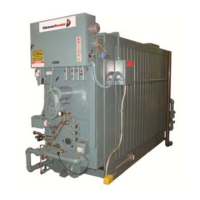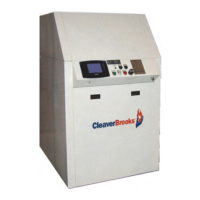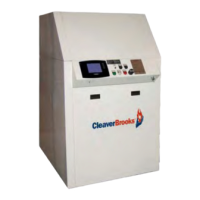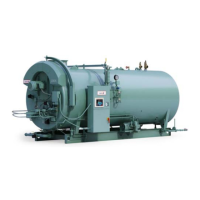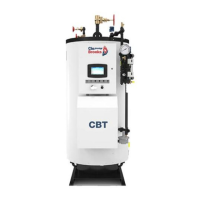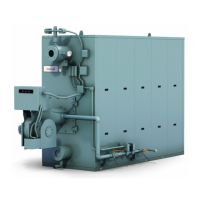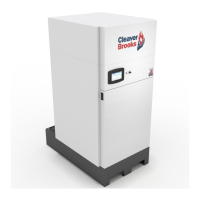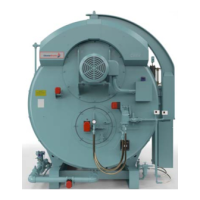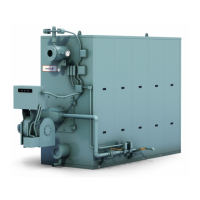Sequence of Operation
4-4
750-211 (revised 2009)
Promethean Boilers, Model 4WI Manual
At the completion of the high fire purge period, the program relay signals the modulating damper motor (MDM)
to drive the air damper to its low fire position.
To assure that the system is in low fire position prior to ignition, the low fire switch (LFS) must be closed to com-
plete the “low fire proving circuit.” The sequence will stop and hold until the modulating damper motor (MDM)
has returned to the low fire position and the contacts of the low fire switch (LFS) are closed. Once the low fire
switch is closed, the sequence is allowed to continue.
4.3.2 — Ignition Cycle
The ignition transformer (IT) and gas pilot valve (GPV) are energized from the appropriate pilot ignition terminal.
The pilot flame must be established and proven by the flame detector (FD) within a 10 second period in order for
the ignition cycle to continue. If for any reason this does not happen, the system will shut down and safety lockout
will occur.
With a proven pilot, the man fuel valve(s) (OV or MGV) is energized and the main fuel valve light (FVL) in the
panel is lit. The main flame is ignited and the trial period for proving the main flame begins. It lasts 10 seconds for
light oil and natural gas, and 15 seconds for heavy oil. At the end of the proving period, if the flame detector still
detects main flame, the ignition transformer and pilot valve are de-energized and pilot flame is extinguished.
4.3.3 — Run Cycle
With main flame established, the program relay releases the modulating damper motor (MDM) from its low fire
position to control by either the manual flame control (MFC) or the modulating control (MC), depending upon the
position of the manual-automatic switch (MAS). This allows operation in ranges above low fire.
NOTE: The ignition trial cannot be started if flame or a flame simulating condition is sensed during the pre-purge
period. A safety shutdown will occur if lame is sensed at this time.
NOTE: An oil fired burner may be equipped with an oil pilot rather than a gas pilot. The ignition sequence of both is
identical.
NOTE: If the main flame does not light, or stay lit, the fuel valve will close. The safety switch will trip to lock out the
control. Refer to flame loss sequence (Section 4.4) for description of action.
NOTE: Depending upon the requirements of the regulatory body, insurer, or fuel being burned, either the 10 or 15
second pilot ignition terminal may be used. Both provide the same function but differ in time interval allowed for
proving main flame ignition. Refer to the boiler wiring diagram.
The cause for loss of flame or any other unusual condition should be investigated and corrected before attempting to
restart. Failure to follow these instructions could result in serious injury or death.
!
Warning
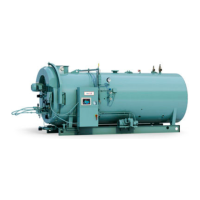
